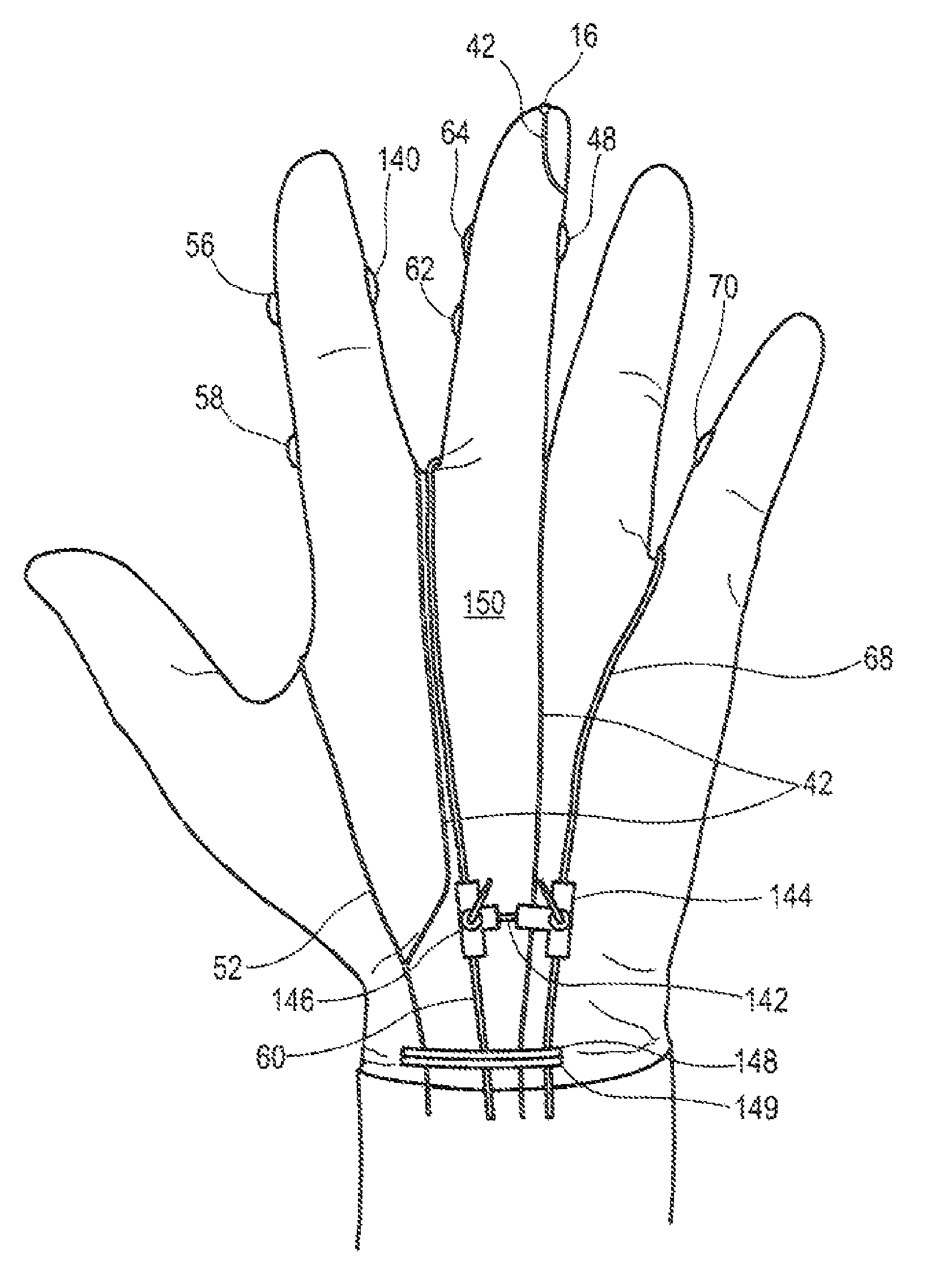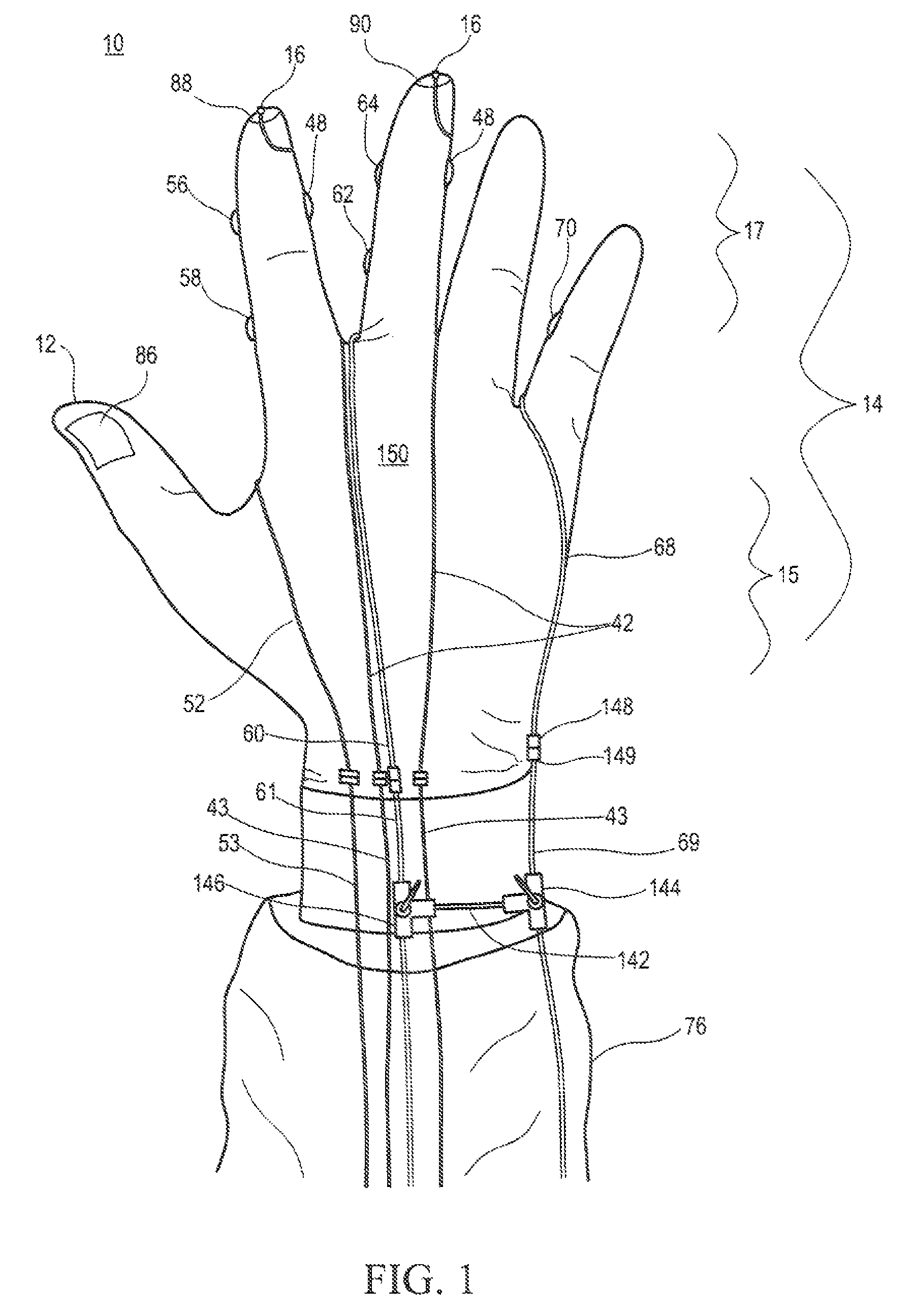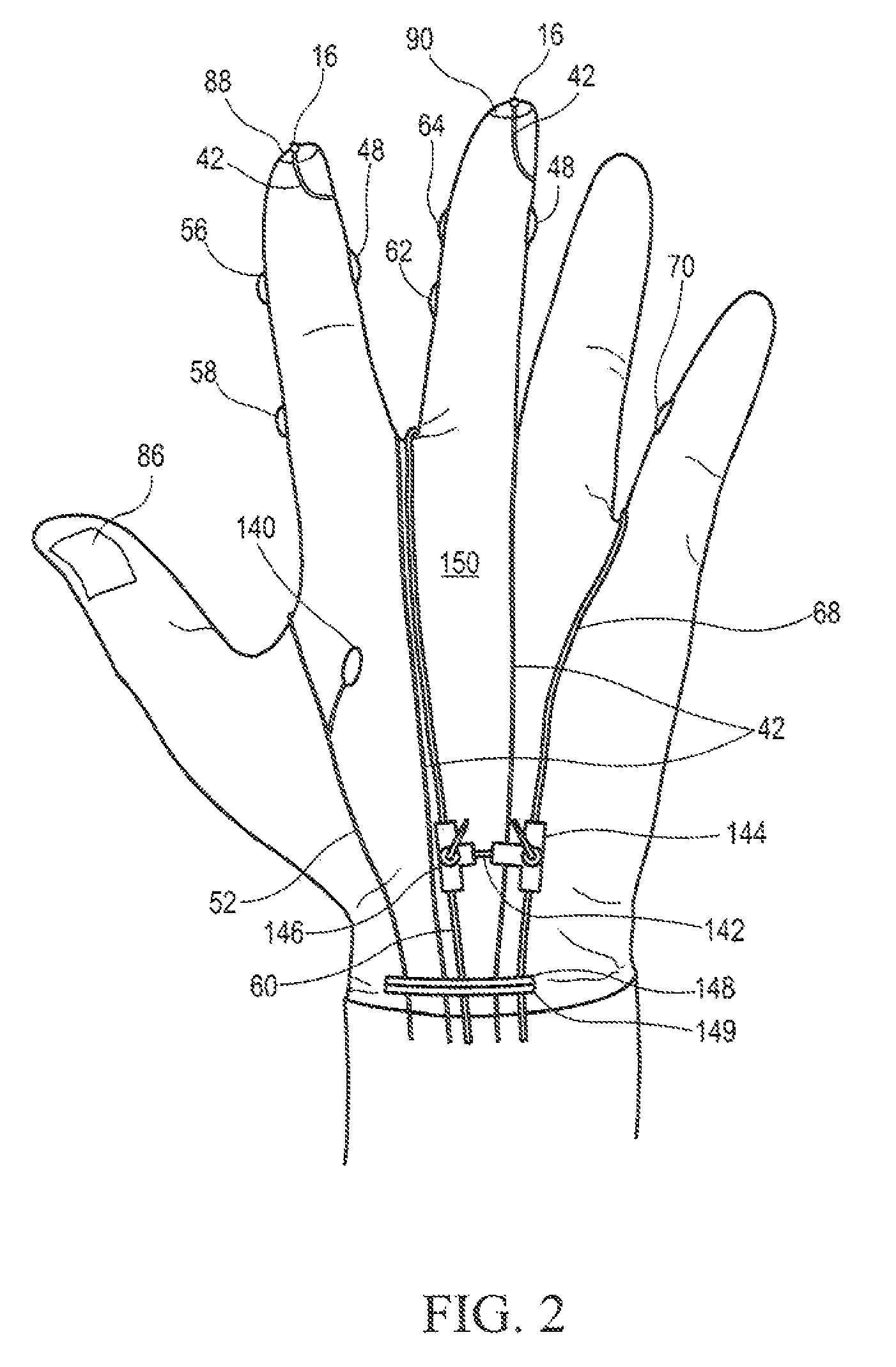Surgical glove systems and method of using the same
a glove system and surgical technology, applied in the field of surgical glove systems, can solve the problems of entanglement problems, shorten the effective working length of the instrument, and the difficulty of easy access of the instrument between surgeons, so as to eliminate the problem of entanglemen
- Summary
- Abstract
- Description
- Claims
- Application Information
AI Technical Summary
Benefits of technology
Problems solved by technology
Method used
Image
Examples
Embodiment Construction
[0032]As shown in FIGS. 1-13, this invention is directed to surgical systems 10 that include one or more surgical gloves 12, 13 having support systems 14 such as, but not limited to, one or more lights 16, electrical cautery 18, suction 20 and irrigation 22. The surgical glove 12, 13 may include one or more of the lights 16, electrical cautery 18, suction 20 and irrigation 22 positioned on distal ends 24 of fingers 26 of the surgical gloves 12, 13. The support systems 14 may be controlled with switches (e.g., 48, 56, 58, 62, 64, 70 and 140) positioned on the fingers of the glove 12, 13 upon which each support system 14 is positioned. The switches may be operable with the thumb of the human hand to which the surgical glove 12, 13 is attached. The surgical system 10 may also include a surgical gown 30 having a connection system 32 for attaching support conduit 34 of the support systems 14 to the surgical gown 30. The surgical system 10 enables a surgeon to have a plurality of support ...
PUM
 Login to View More
Login to View More Abstract
Description
Claims
Application Information
 Login to View More
Login to View More - R&D
- Intellectual Property
- Life Sciences
- Materials
- Tech Scout
- Unparalleled Data Quality
- Higher Quality Content
- 60% Fewer Hallucinations
Browse by: Latest US Patents, China's latest patents, Technical Efficacy Thesaurus, Application Domain, Technology Topic, Popular Technical Reports.
© 2025 PatSnap. All rights reserved.Legal|Privacy policy|Modern Slavery Act Transparency Statement|Sitemap|About US| Contact US: help@patsnap.com



